PoMo In The City – Open City Tours, London
The Salterton Arts Review’s first ever guest post is by Dr. David Craggs on the subject of Postmodern London. Taking inspiration from a recent Open City London tour, get ready to dive deep into (PoMo) heritage and the built environment.

Big Bang Urbanism
It has been said that property developers in the 1980s changed the face of London’s Square Mile to a greater extent than even the Luftwaffe managed some forty years prior. The decade still stands out as a hugely transformative period in the economy, culture and built environment of London, driven by the Big Bang of Thatcherite financial deregulation, the IT revolution, and the shift to a post-industrial occupational structure. It was the point at which London began to emerge from four decades of population decline and the collapse of its maritime trade into a new era of rebirth and renewal as a modern global city.
In the old Square Mile alone, the 1980s boom produced some 30 million square feet of new office space and expansive, computerised trading floors – one of the greatest periods of remaking in its 2000-year history. In the midst of this process, a City planning report noted that fully one-third of existing building stock was being completely redeveloped. Out with Dickens-era counting-houses and coffee shops and the ‘gentlemanly capitalism’ of the merchant banking dynasties, in with US and Japanese investment banks, the yuppie class, and Nick Leeson.
Transformation (or should that be revolution?) was equally apparent in the changing architectural outlook of the City, as the austere facades of Victorian banking halls and the fairly threadbare attempts to introduce International Style modernism gave way to the eclectic offerings of a new postmodern vernacular. Arguably, the recent cluster of skyscrapers that has been built out since 2010 has had a more dramatic, and controversial, impact on the City skyline. But from the vantage point of today’s frenzied protrusion of gherkins, cheesegraters, scalpels, walkie-talkies and the like, the 1980s boom now appears as a more coherent period of change that produced a distinctive architectural vintage.
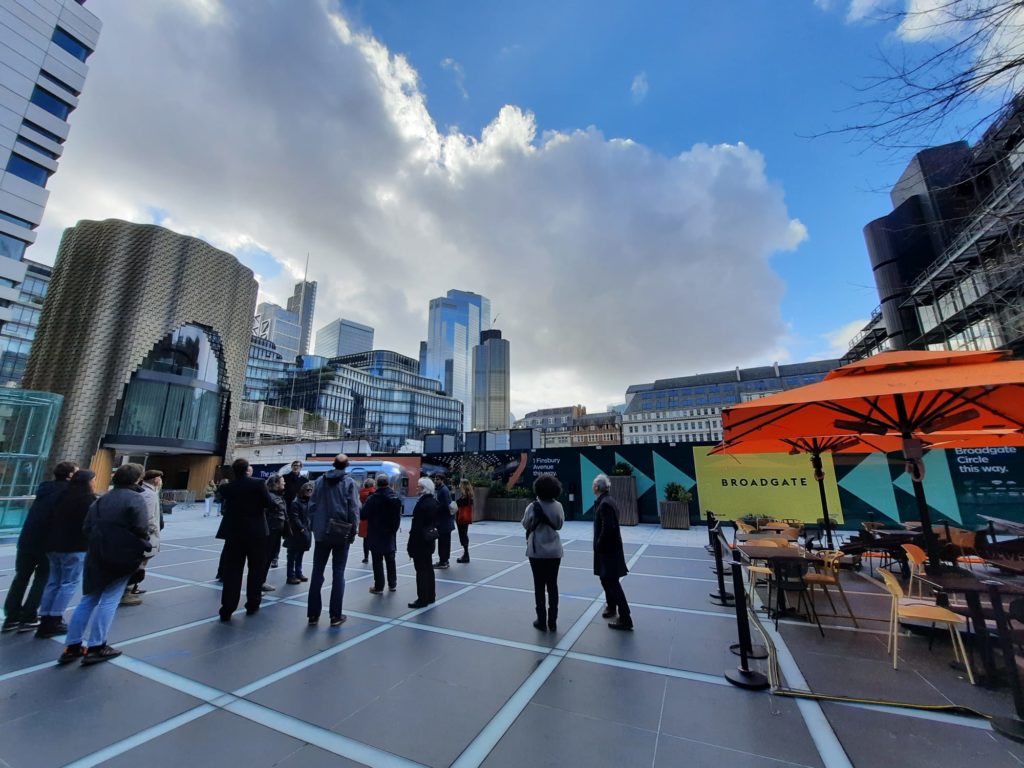
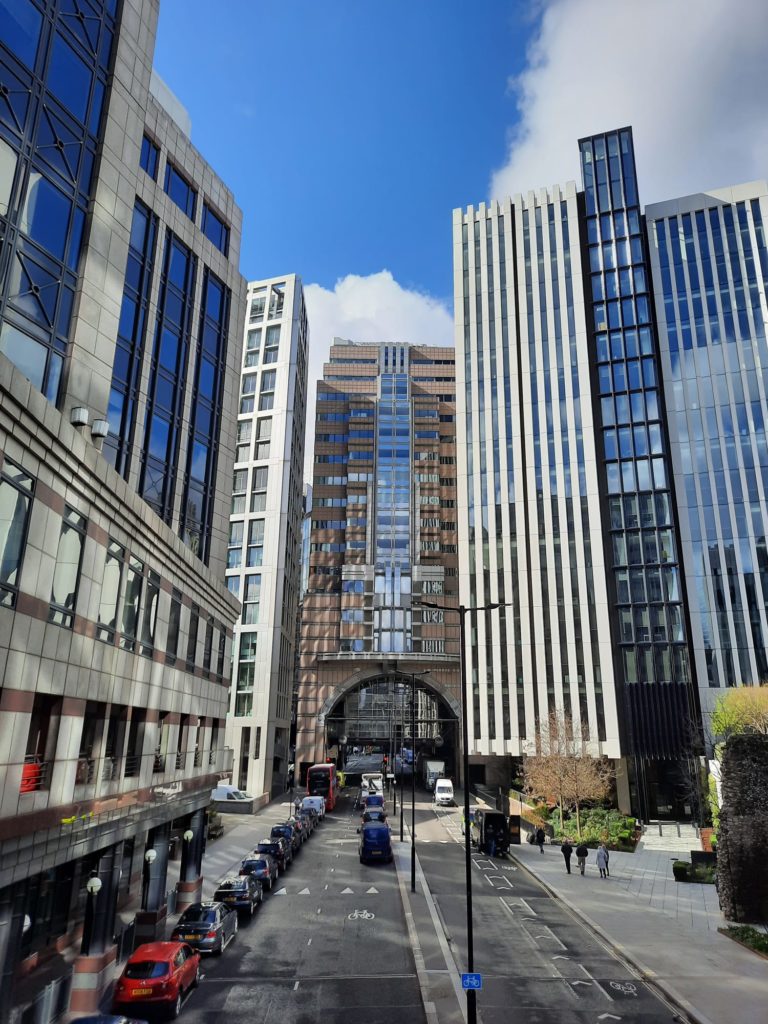
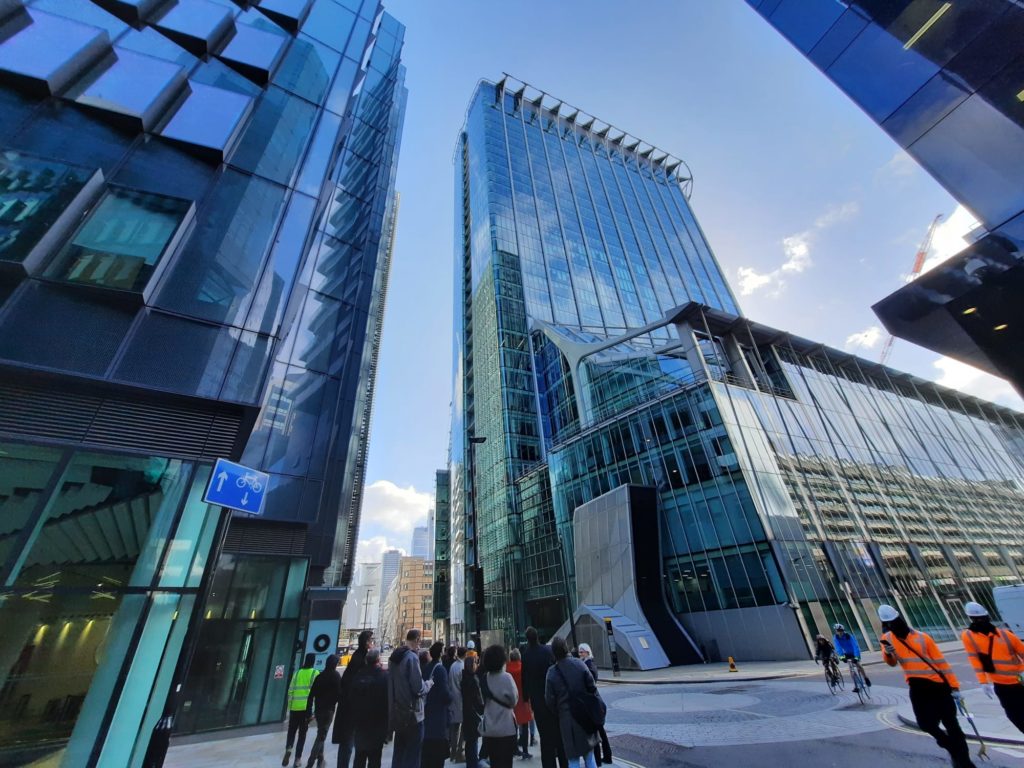
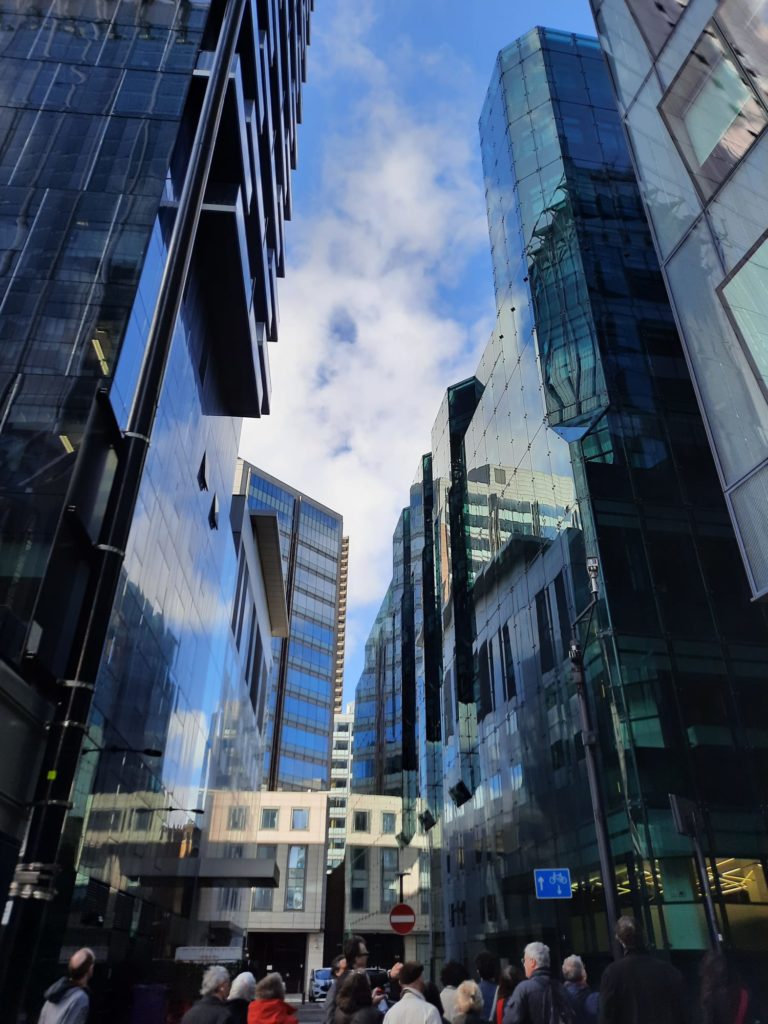
Back To The Future
Now, almost another forty years on, this relatively recent history is being reconsidered in terms of built heritage. And this brings us to the subject of today’s excursion – a half-day walking tour of ‘PoMo in the City’, hosted by the Open City Tours team.
Open City is perhaps best known for organising the annual and extremely popular Open House London weekend. Open City Tours is part of a wider programme of architecturally-themed walking tours, guidebooks, films, podcasts and lectures that, on the basis of today’s offering, is well worth checking out.
Our guide for this tour is Jon Wright, an architectural historian who currently works as a Twentieth Century Heritage Consultant. Mr. Wright has an evident enthusiasm for his subject, and with first-hand experience of 80s era conservation projects (including the forthcoming reworking of the main foyer at Venturi and Scott Brown’s National Gallery Sainsbury Wing extension) is perfectly placed to lead an informative and very enjoyable tour on the subject. This being the Square Mile, we’re dealing almost exclusively with commercial office buildings. Interiors are therefore off limits, so it’s fortunate that the three hours pass in relatively decent weather. The early spring sunshine certainly casts the colourful facades and playful forms of postmodern urbanism in the best possible light
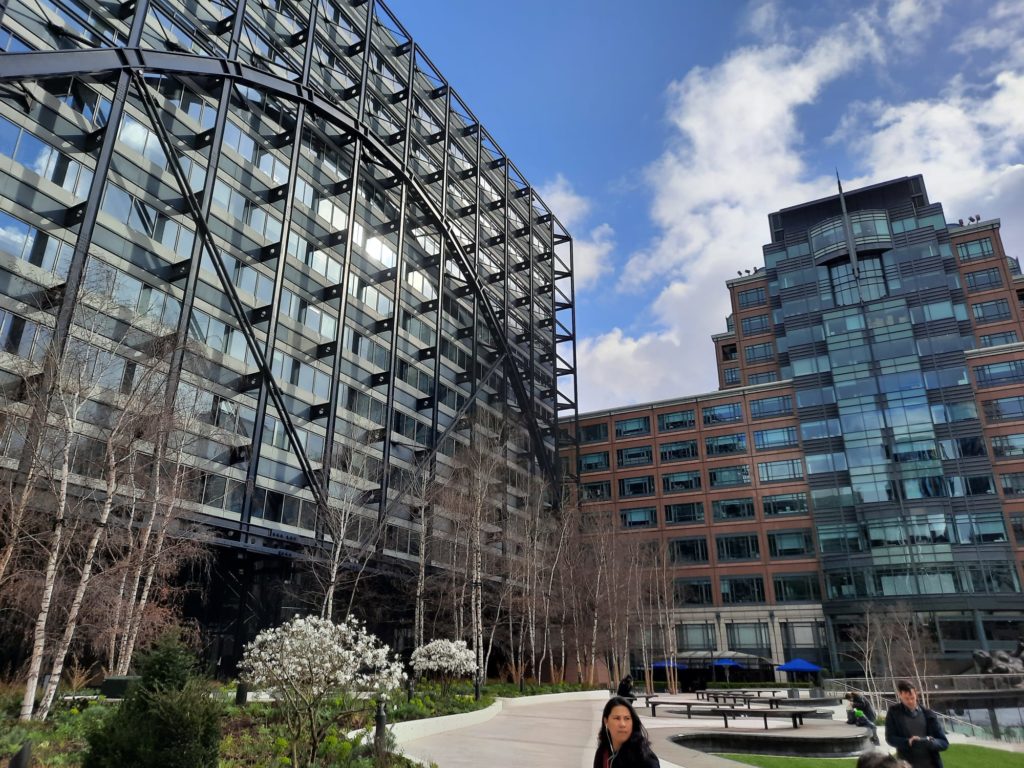
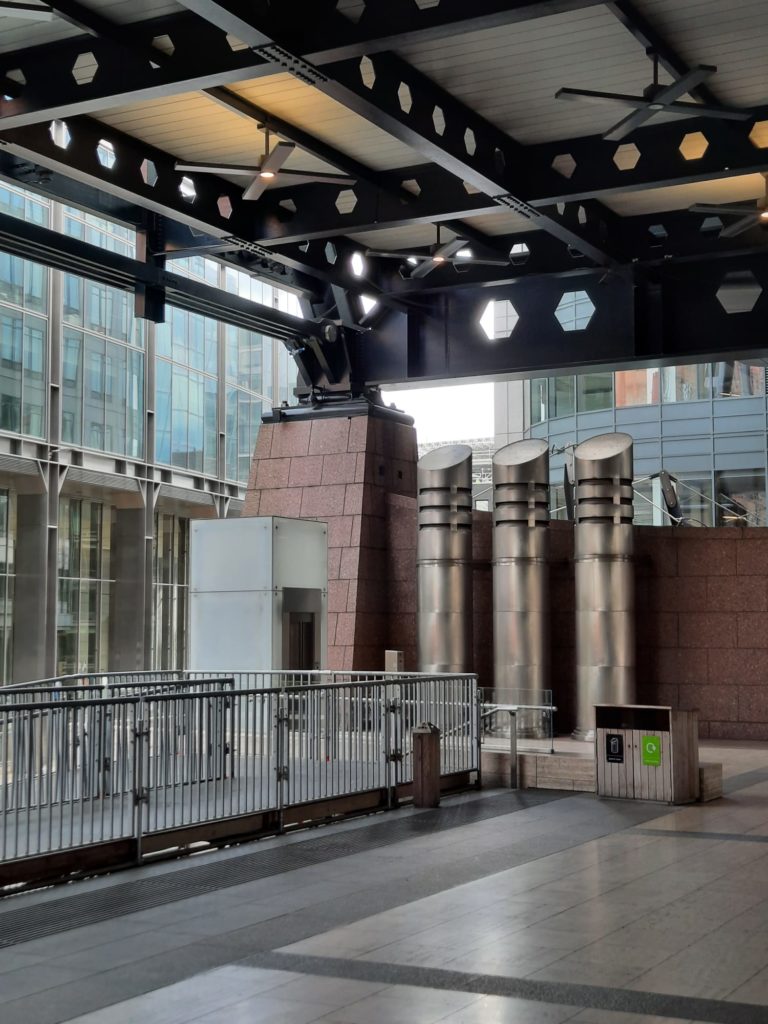
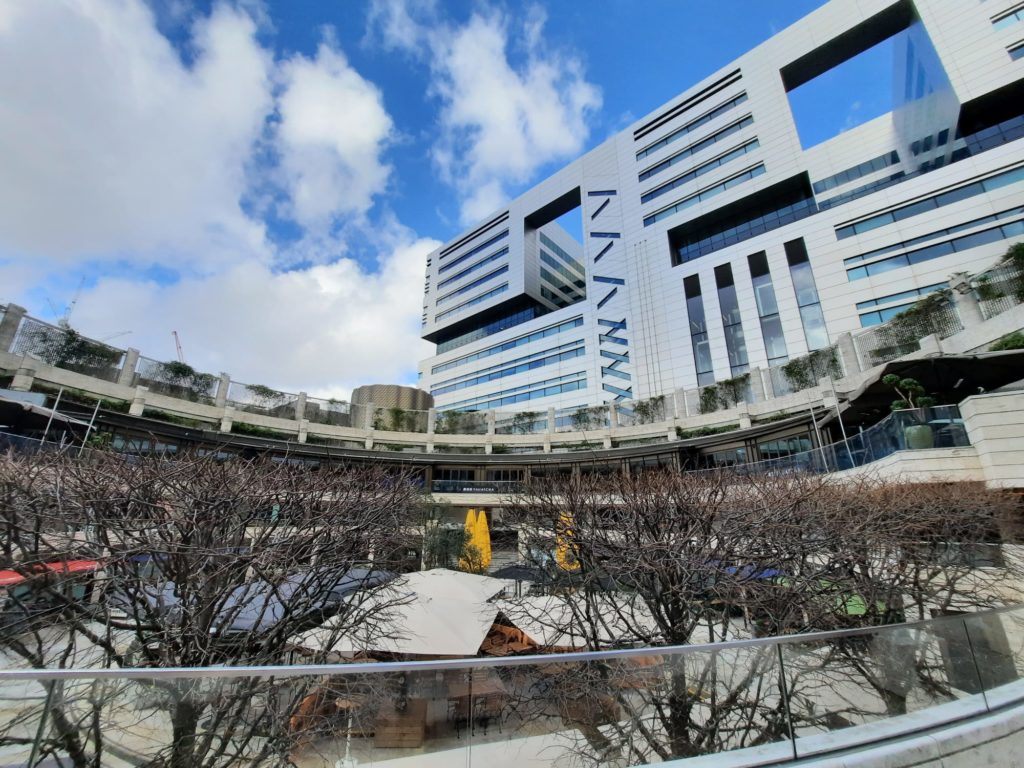
Reconfiguring The City – Broadgate and After
The tour starts, appropriately enough, under the elevated mass of Exchange House, part of the original Broadgate Estate – perhaps the spiritual home of the 1980s Square Mile. With fourteen separate and distinctive buildings laid out around landscaped urban plazas, restaurant and retail offerings, an open-air ice rink and an abundance of public art commissions, Broadgate represented one of the first instances of Americanised ‘real estate’ development in London. Canary Wharf would arguably take this one step further. Broadgate was so 1980s that Margaret Thatcher herself famously clambered into a JCB digger to lead the groundbreaking ceremony.
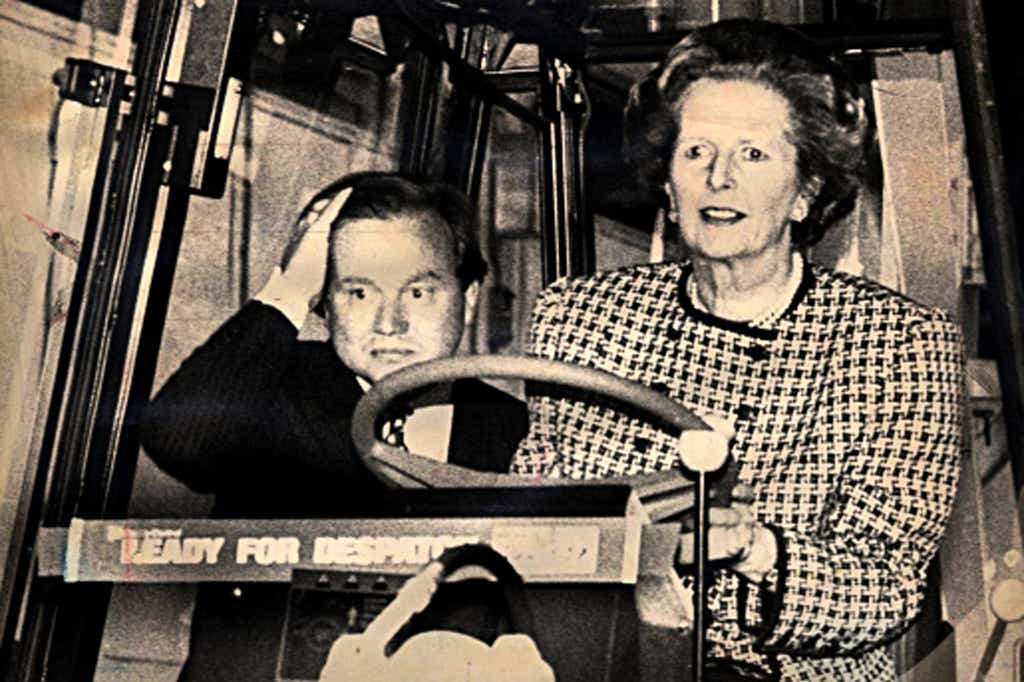
From our initial vantage point we are introduced to the juxtaposition of Exchange House and 155 Bishopsgate. The view encapsulates one of the great themes of the postmodern vernacular – the fusion of high-tech (think Richard Rogers, Norman Foster, Nicholas Grimshaw) and the pastiche of deco stylings, polished limestone and pink granite facades (Terry Farrell, James Stirling, Peter Foggo).
Broadgate also sets the scene for the theme of heritage and conservation, which is held together throughout by Mr. Wright’s adept and engaging narration – a welcome mix of insight and opinion. This is brought into sharp relief by our turn into Broadgate Circle whose once coherent vistas have been replaced by the looming and incongruous mass of No. 5 Broadgate, a building that was shortlisted, rightly so in my opinion, for the annual ‘Carbuncle Cup’ award in 2016.
As our guide explains, Broadgate now stands at the vortex of forces that built heritage in the City has always faced: commercial imperative and the gale of creative destruction facing off against the urge to preserve and to value architecture on its own terms. Broadgate didn’t make the cut for listed building status, despite calls for this, though we do encounter several examples of recently listed postmodern buildings on the remainder of our walk. But it does seem a shame that the piece-by-piece redevelopment of the estate, which also now includes 100 Liverpool Street, is slowly but surely chipping away at its original character – a whole that is no longer greater than the sum of its parts.
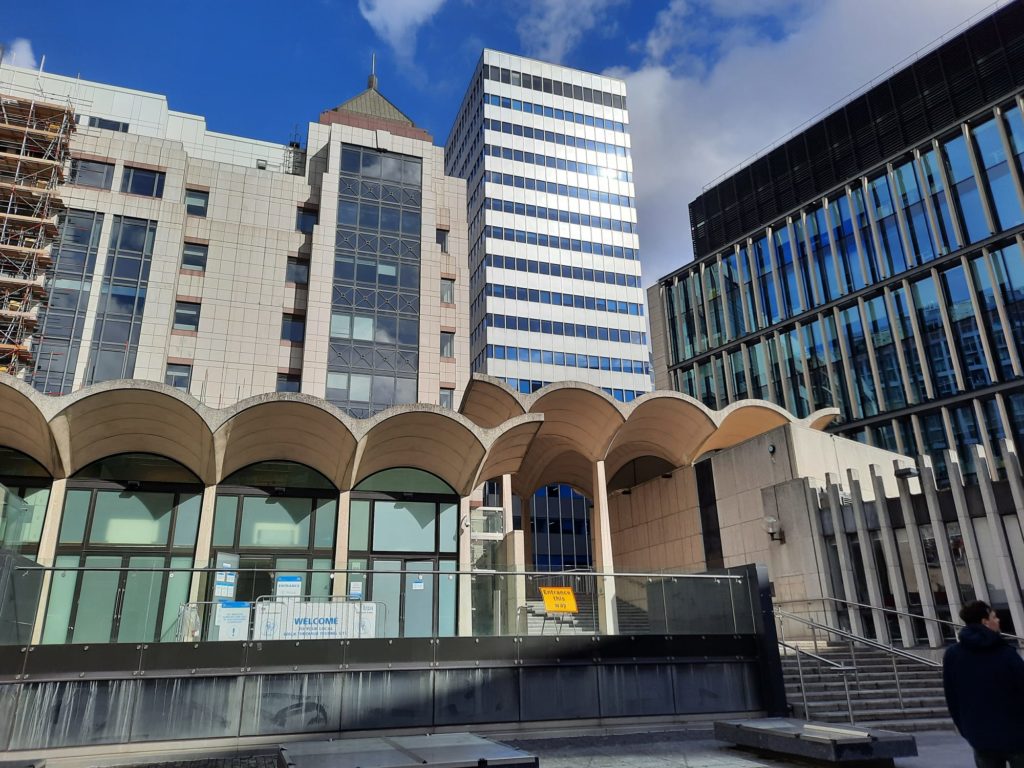
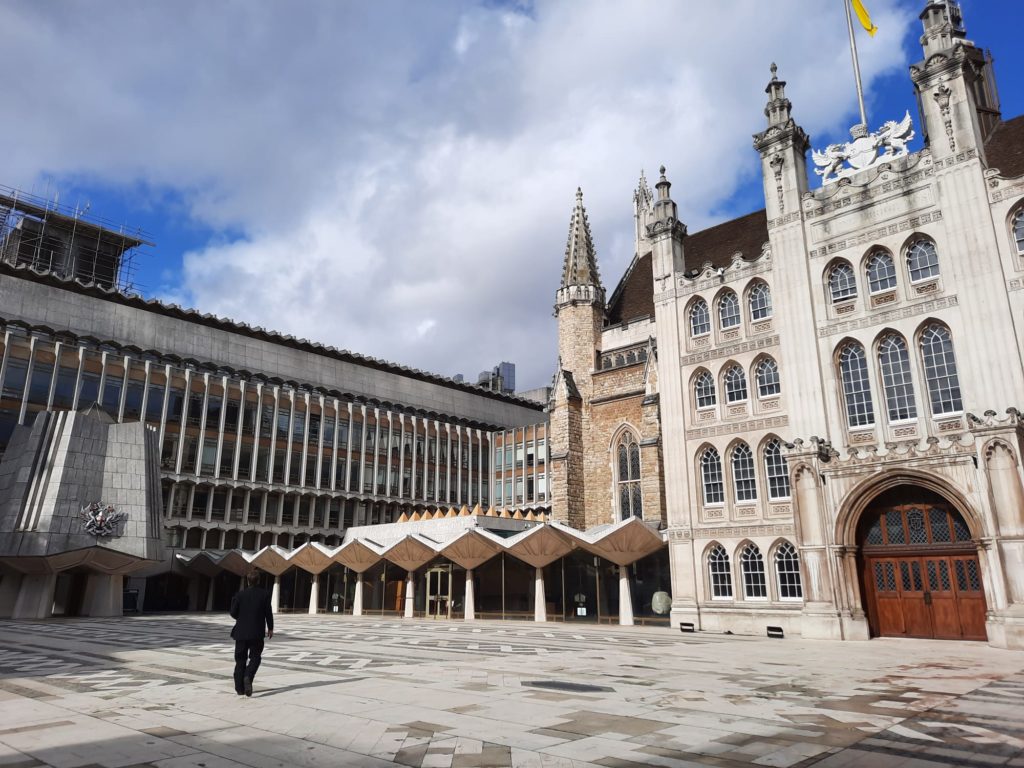
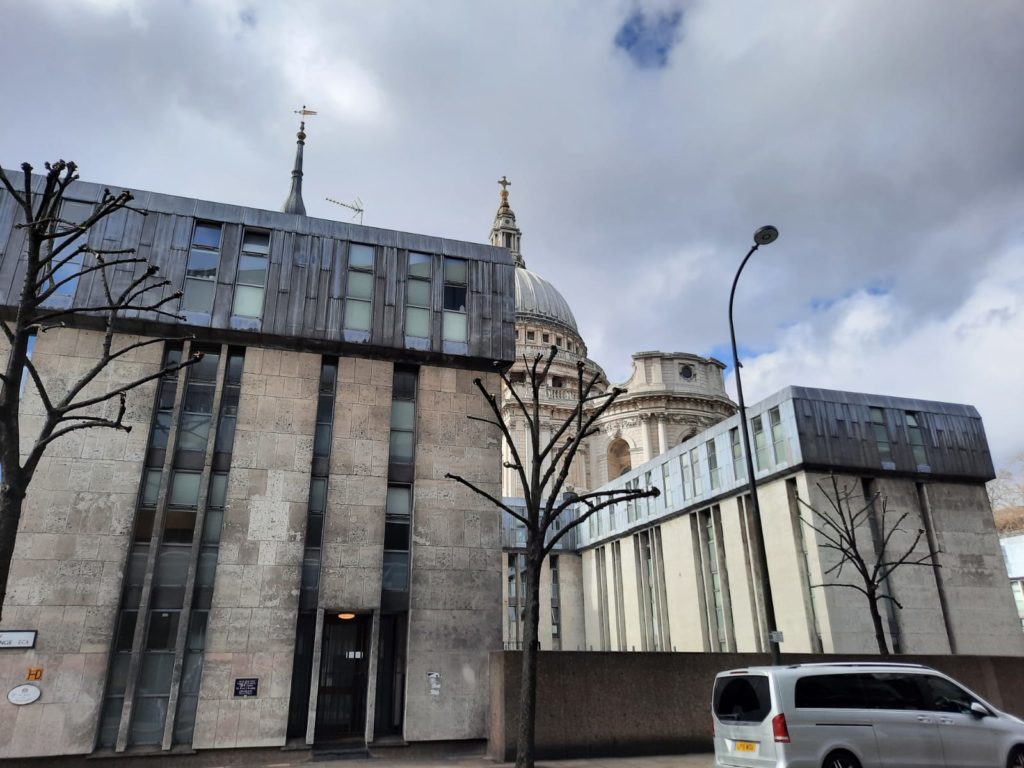
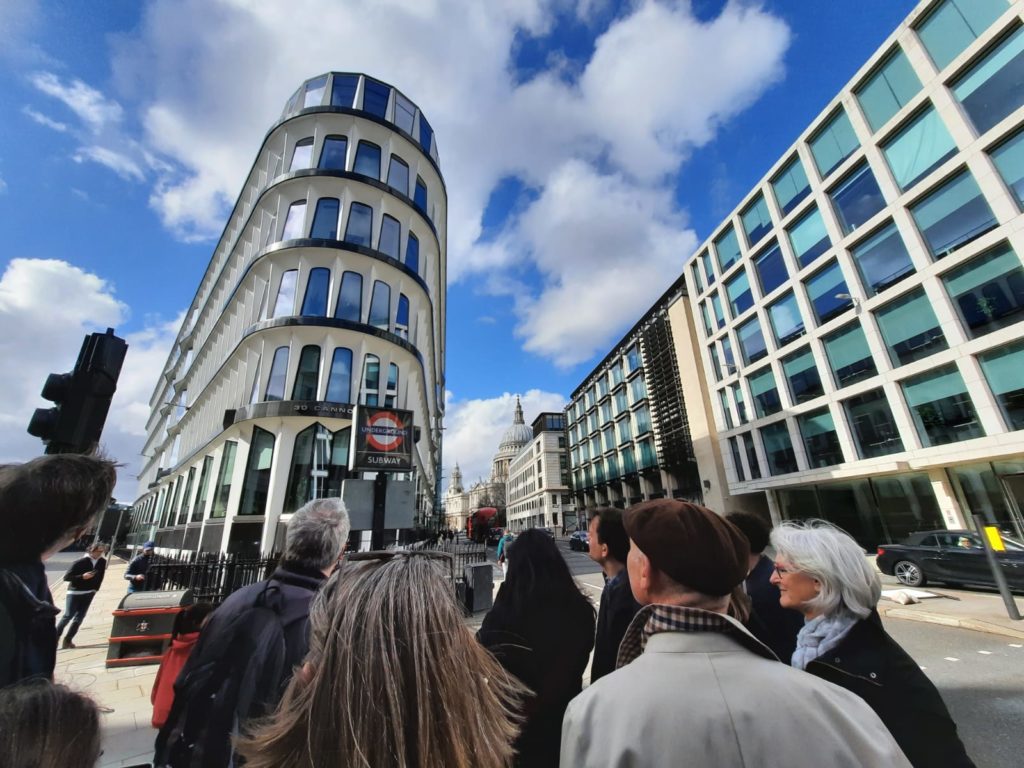
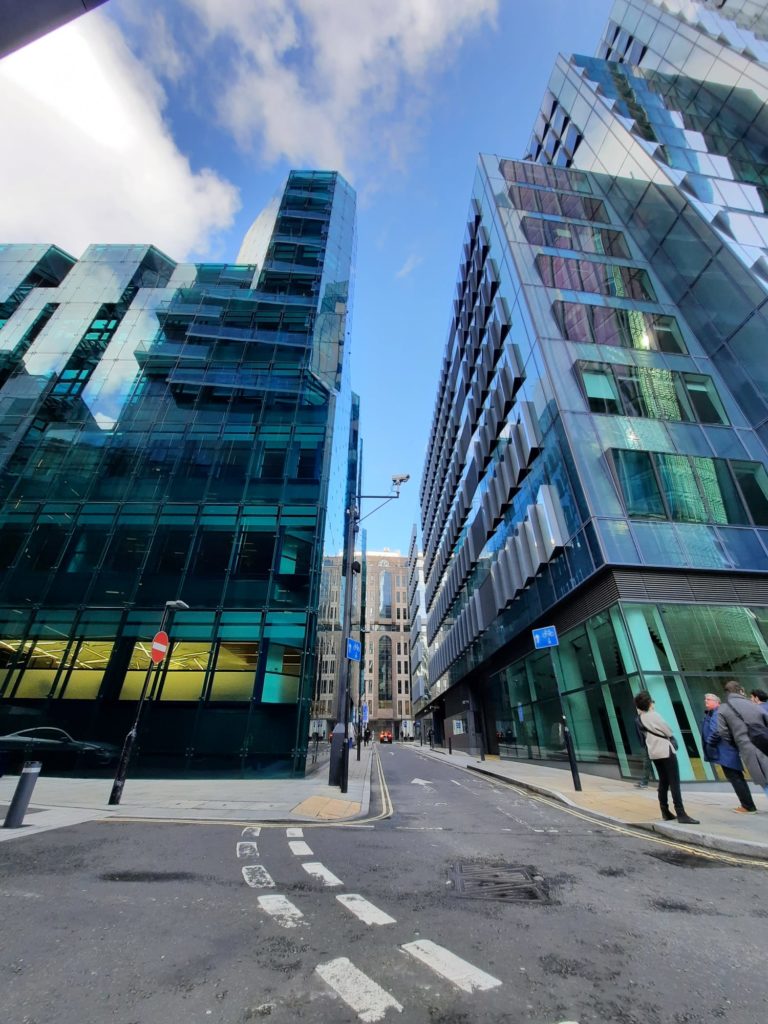
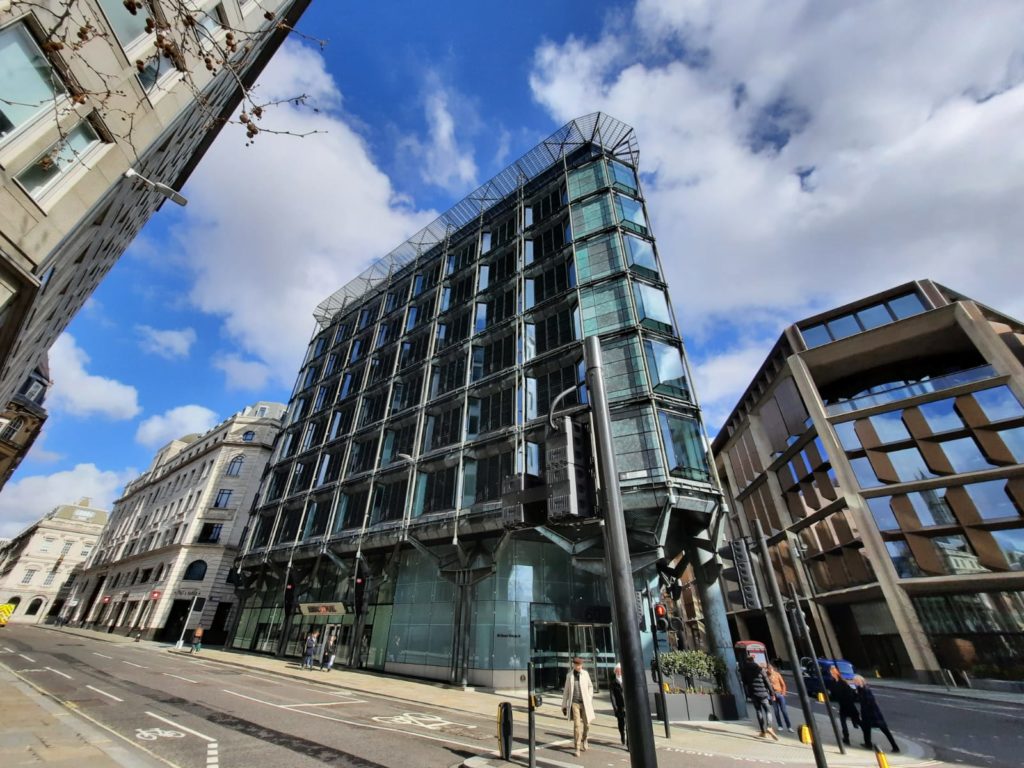
PoMo In Practice
Our tour continues onwards to Milton Gate, Alban Gate and Bracken House, before finishing atop the astroturfed roof garden of No. 1 Poultry – perhaps the City’s boldest example of the postmodern genre and one of the first to achieve listed building status.* One of the strengths of the tour Mr. Wright has compiled is that it doesn’t go straight for the obvious. So there’s no Lloyds Building (more in the hi-tech vein), no Minster Court, and no 54 Lombard Street – although we’re afforded a skyline view of these buildings from the roof of No. 1 Poultry.
Instead, we visit sites such as 60 Queen Victoria Street (also now listed) and 25 Gresham Street, where we can see the legacy of postmodernism lasting at least until the turn of the twenty-first century, and from where we can observe clear contrasts between these distinctly ‘architectural’ buildings and the more recent turn to blander and more repetitive corporate tropes.
We’re also presented with evidence that postmodernism wasn’t quite the full-on stylistic revolution it is often considered to be. Stopping off at the Guildhall West Wing, St Paul’s Choir School, and 30 Cannon Street, we’re shown how some of the key postmodern concerns (contextual, referential, often playful juxtaposition of materials and colours) actually began to materialise towards the end of the modernist wave in the early 1970s. This is another strong point of the tour and is a point of insight that clearly demonstrates the value in having a guide with the right background for this sort of thing.
* Access to the roof garden is not guaranteed. It’s a case of trying your luck on the day with the management team at Coq d’Argent, who operate the space. On this occasion they kindly obliged our request.
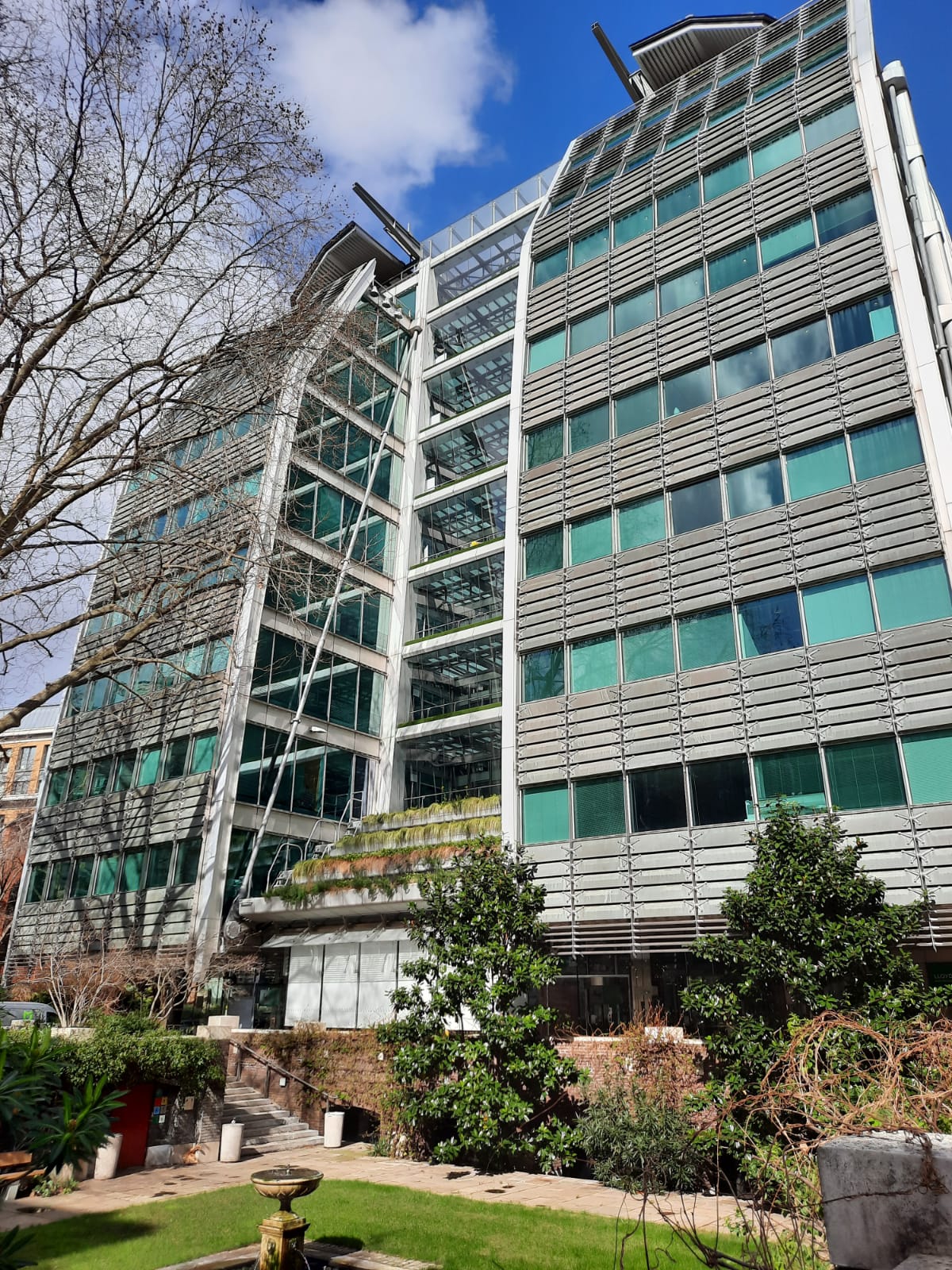
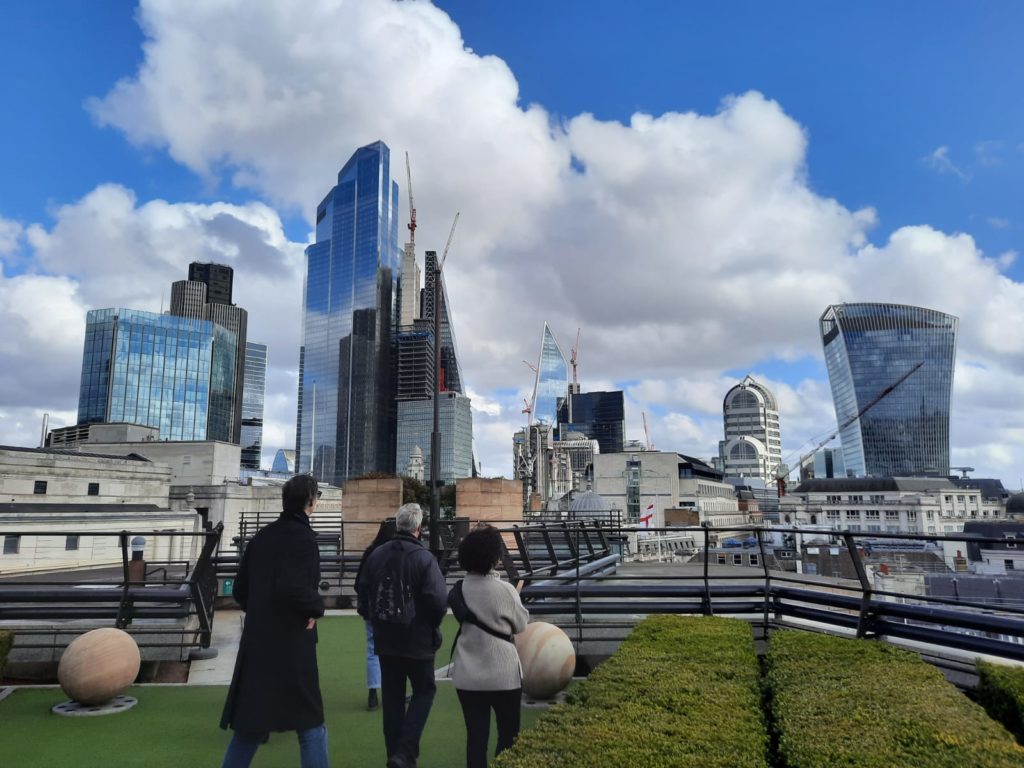
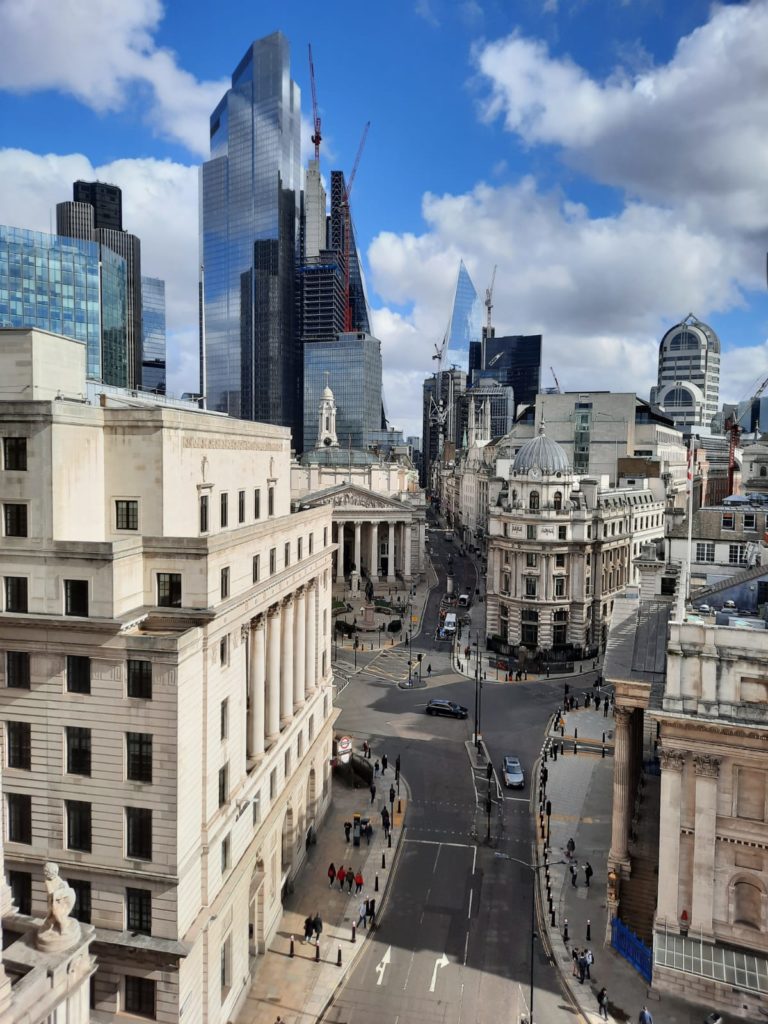
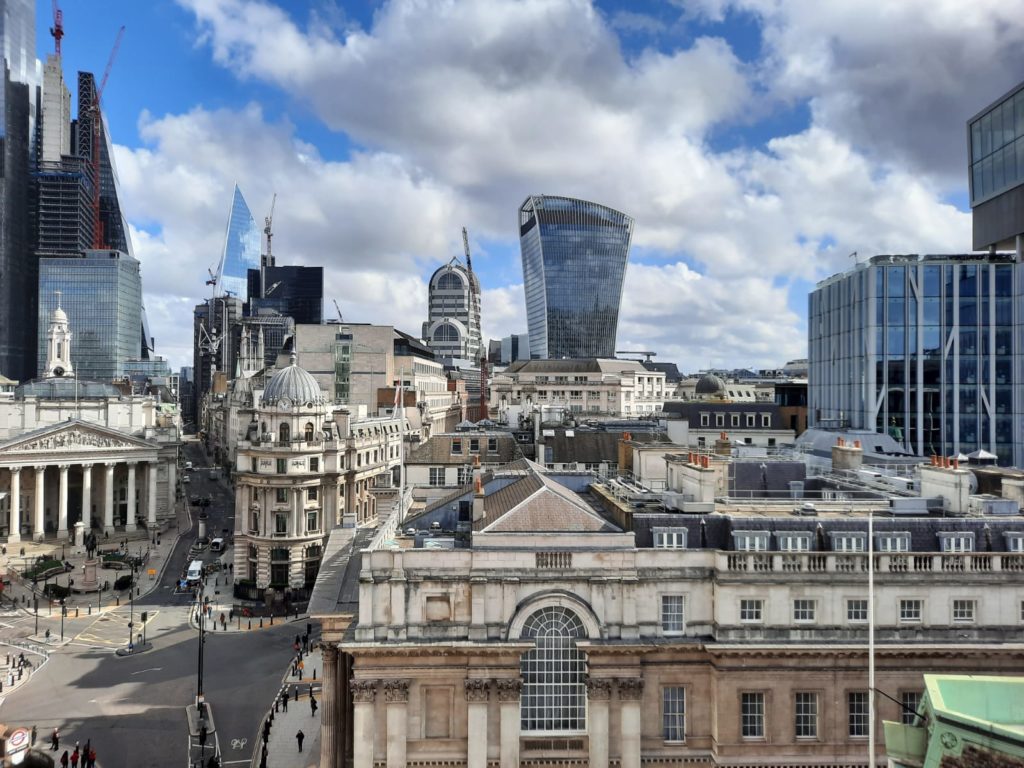
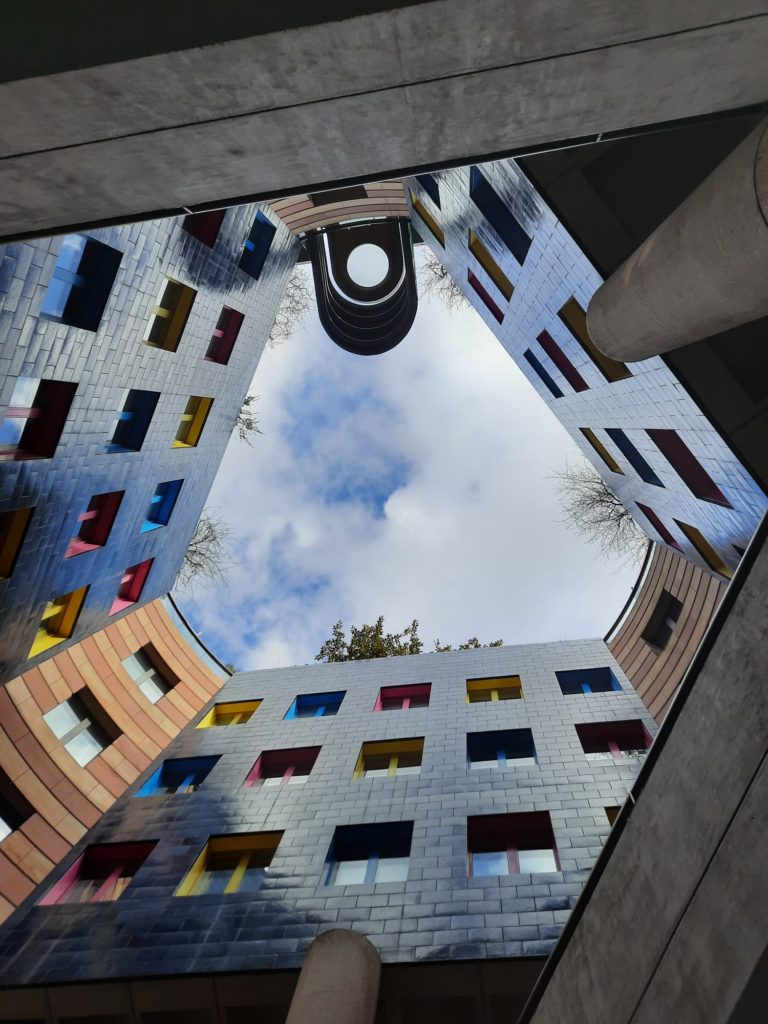
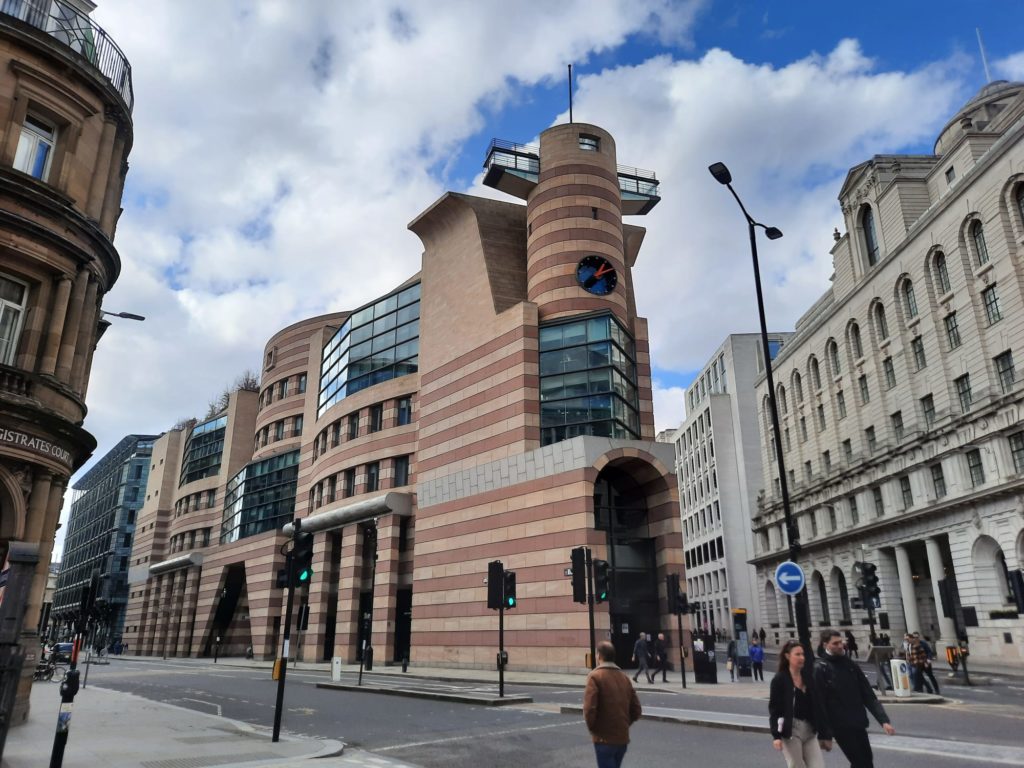
History Becoming Heritage
One thing we learn on this tour is that under normal circumstances buildings are meant to have been standing for at least thirty years, to prove themselves, before they can be considered for listed status on the Historic England register. Lloyds, listed in 2011, some twenty-five years after completion, and No. 1 Poultry in 2016, just eighteen years after completion, represent rare exceptions. But as we move ever further into the 2020s, an increasing number of buildings and structures from the postmodern era are now being put forward for listings consideration – especially those that are under threat of redevelopment.
From start to finish, the tour takes close to three hours to complete. Our guide is in no particular hurry and gives generous time for contemplating the changing cityscape, addressing our numerous questions and engaging in discussion. It is all time well spent and I think is a just reflection of the increasing respect with which the architecture of postmodernity is being viewed. As we found with our happy diversion to Arundells last year, the cultural traits of the late 1980s/early 1990s, though very much within living memory, feel more historic now than contemporaneous. And I certainly came away from this tour hoping that this important and distinctive period in the City’s history will remain evident through greater efforts on the part of planners, developers and occupiers to preserve its formative buildings.
If you see this after your page is loaded completely, leafletJS files are missing.

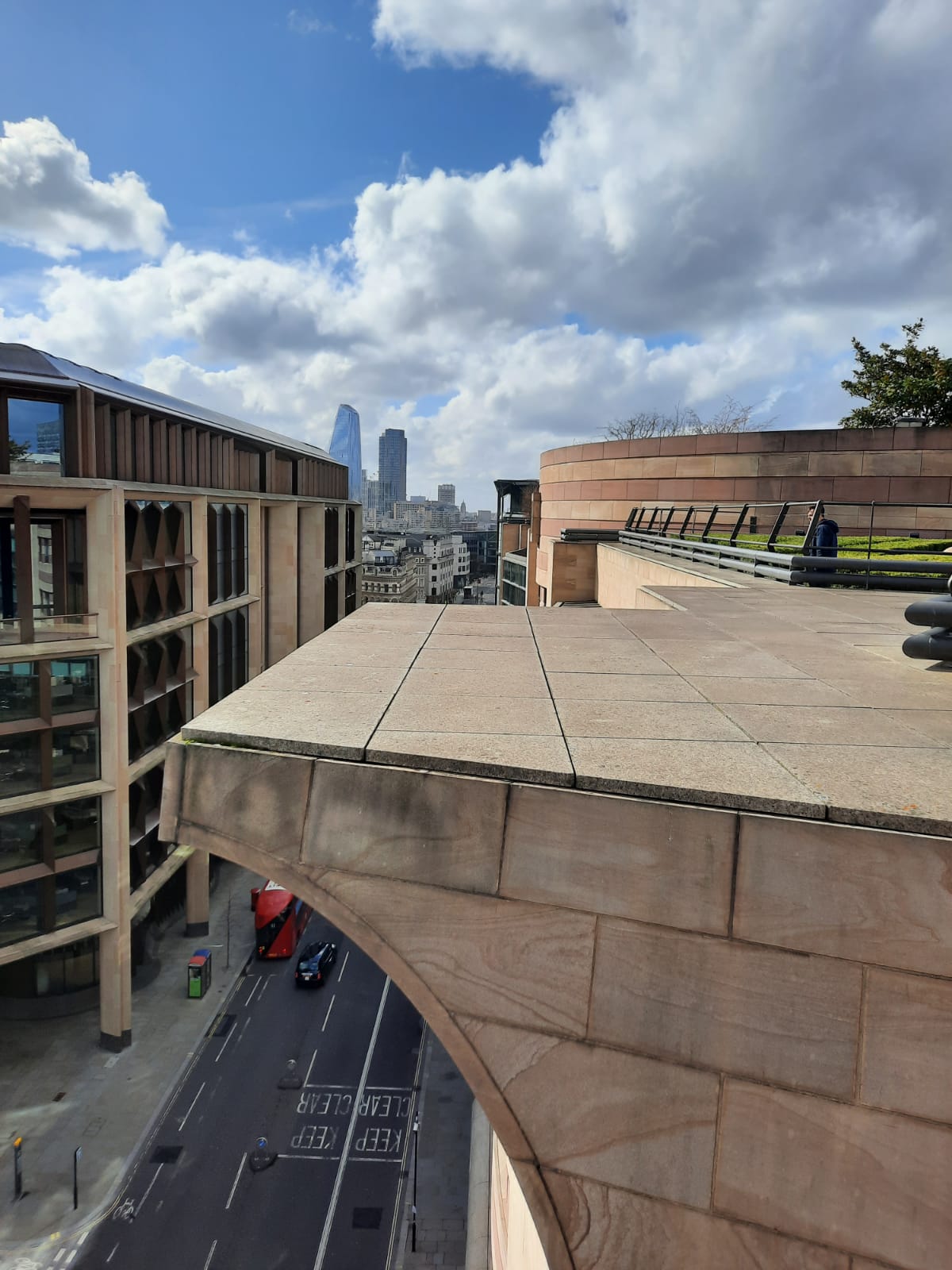
3 thoughts on “PoMo In The City – Open City Tours, London”